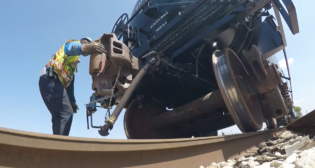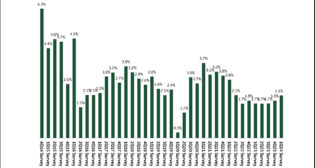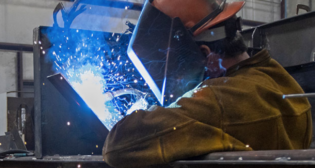
Carl Icahn knows rail investing
Written by William C. Vantuono, Editor-in-ChiefFinancial Edge, December 2018 Railway Age: On Oct. 22, American Railcar Industries Inc. (ARI) announced that it was being acquired by a subsidiary of ITE Rail Fund L.P. (ITE). The acquisition price was $70 per share, for a total purchase price (including debt) of $1.7 billion. That price represented a 51% premium to the previous day’s close (Oct. 19) of $46.29 per share. As ITE is privately held, ARI will become a private company at acquisition.
So what is to be made of a high-priced acquisition of a railcar manufacturer and lessor? After the initial acquisition, many insiders were overheard saying that the price seemed too high and did not support the purchase. After all, a 50% increase in share price does seem like a significant premium. But when one looks a little deeper, those concerns are unwarranted.
First, a bit of history: The post-announcement headline was the cool 423% return on Carl Icahn’s (ARI’s largest shareholder) investment in ARI. That translates roughly into $757.2 million. Icahn’s involvement with ARI goes back into the 1980s, when he originally acquired a controlling interest in ACF industries (ARI’s predecessor) as part of a classic 1980s style LBO, where he outbid E.M. Warburg, Pincus & Co. Soon after, in the early 1990s, Icahn recapitalized ACF and took roughly $475 million for his firm, Highcrest Investor Corp.
In other words, Carl Icahn has made a fortune selling railcars not once, but twice.
What about today and the price paid by ITE? On a fundamental market level, railcar prices (especially tank railcars) seem to be on the rise. Right now, a DOT 117J tank railcar for crude service (lined) is pricing out at roughly $150,000 per car, a YOY increase of roughly 20%. The ARI acquisition brings with it a lease fleet of 13,721 railcars (mostly tank railcars). This lease fleet is a more recent phenomena, having begun serious accumulation after the sale of American Railcar Leasing’s (ARL) fleet of 50,000 railcars to SMBC Rail Services, LLC (an operating lessor) in 2017 for roughly $2.75 billion. ARI was the sole provider of railcars and tanks to ARL.
Who was the owner of ARL? You guessed it: Carl Icahn again!
Wait! In other words, Carl Icahn has made a fortune selling railcars three times.
So on a per-car basis, ITE is paying roughly $125,000 per car for a fleet of relatively new tank railcars that are currently on lease. This does not even account for any value being attributed to the manufacturing facilities and the current 11,215-car ARI backlog with an estimated market value of $1.1 billion.
Naysayers in the market will point to the statistical metrics that separate the sale of ARI from its competition in the manufacturing and leasing space.
After the acquisition was announced, ARI was trading at two times its book value. On Oct. 23, GATX announced its earnings and book value declined from two times book value to 1.75 times book with a 15% decrease in market cap. Trinity Industries saw a decrease of 30% (this the spinoff of infrastructure-related business Arcosa Industries) with a price to book below one. Greenbrier Industries saw a decrease of almost 20% with a price to book of 1.3 (post earnings).
All this happened while the backlog for railcars increased by 25,000 units in Q32019. The only company that did not get hit with a reduction in share price and book value was ARI.
What gets lost in the sale of ARI is that the marketplace has a seeming insatiable appetite for purchasing railcars on lease. ITE began its investment in the railcar space by purchasing assets put on lease by someone else. These secondary market transactions (unless they are of a critical mass, like the SMBC acquisition or GATX’s recent purchase of 3,100 cars from
ECN Capital) generally do not make headlines. However, leasing companies make bank on secondary market sales. Don’t believe otherwise.
The newly acquired ARI allows ITE to move the game forward one step. Before the acquisition, ITE was purchasing cars from third parties and paying a premium for doing so. After the acquisition, ITE can either increase the return on its leased assets by “acquiring” assets from ARI at a discount to the secondary market price or turn the tables and begin to sell railcars to the secondary market and make the profit it was once paying to others for cars on lease. Lease fleet, backlog, manufacturing and the opportunity to cut out the middleman in acquisitions.
Maybe the price isn’t so high after all.
Oh, and in 1996, Carl Icahn agreed to lease 80% of the then-present ACF Industries lease fleet of tank railcars to GE Railcar Services (now Wells Fargo Rail).
That’s four times.
Financial Editor David Nahass is an authority on all areas of railroad equipment finance and leasing. Nahass writes Railway Age’s monthly Financial Edge column and produces the annual Railroad Financial Desk Book and Guide to Equipment Leasing. He is President of Railroad Financial Corp., a financial advisory firm. He also serves as Chairman of Rail Equipment Finance, an annual industry conference addressing critical developments concerning North America’s railcar and locomotive fleet.



